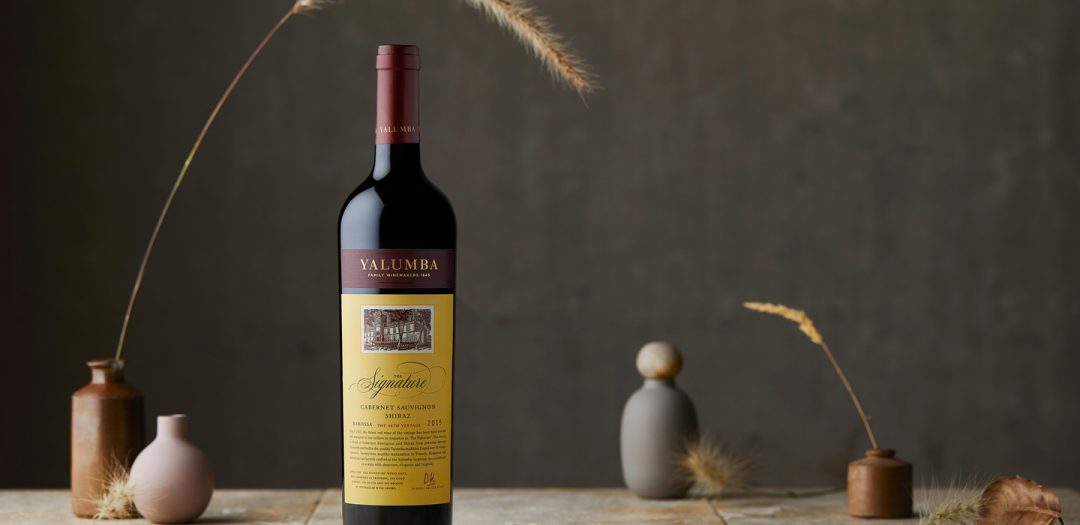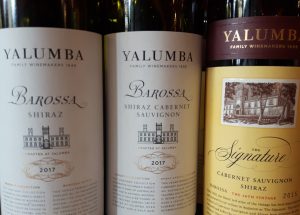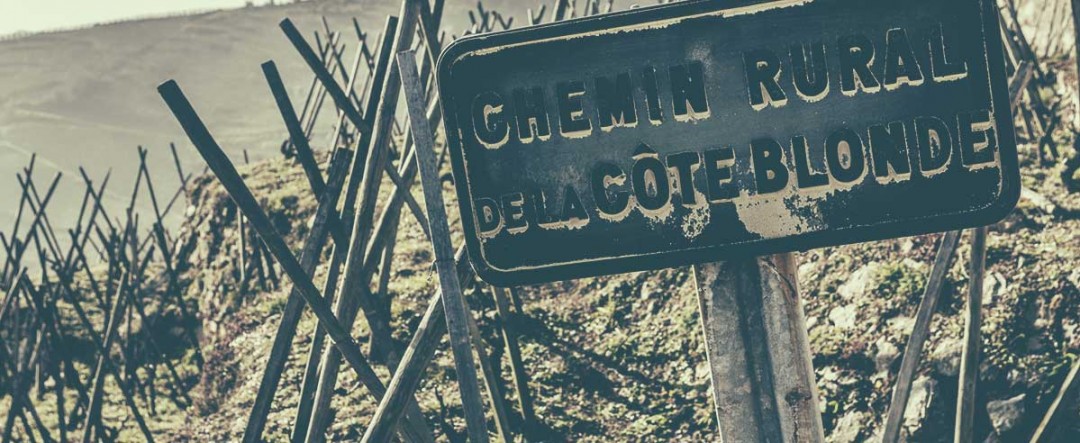Photo credit: Yalumba
Louisa Rose has a big job. She is the head winemaker at Yalumba; Australia’s most historic family-owned winery. The wines of Yalumba are renowned for their consistent, high quality – from the affordable “Y Series” to revered icons like “The Caley”. This reputation is maintained by the hard work and dedication of Louisa and her team. So when her visit to Montréal was anounced – her first since 2011 – I was keen to meet her.
Yalumba is based in the Barossa Valley, in South Australia. “We are incredibly lucky in the Barossa” says Louisa. “The climate is Mediterranean, with rainfall in the winter and spring months, and a warm, dry summer”. The mild winters and dry growing season conditions keep fungal pressure and other vine maladies to a minimum, allowing vineyards to thrive into venerable old age. The Barossa Valley is home to some of the oldest bush vines in the world.
These ideal climate conditions also allow growers to practice organic viticulture with (relative) ease; a philosophy that has long been at the heart of Yalumba’s vineyard management strategy. Encouraging increased biodiversity in the vines is a huge part of this plan. “We work hard to protect our native vegetation, insects, and bird life” says Louisa.
Another benefit of such vibrant, diverse vineyard ecosystems, according to Louisa, is the healthy vineyard populations of wild yeasts. The wines of Yalumba are fermented almost exclusively with yeasts from their vineyards and winery. Louisa is a huge proponent of native yeasts. “They bring so much complexity and texture to our wines”.
From wild yeasts, we moved on to a conversation about signature grapes. Viognier is one such focus among the white wines of Yalumba. In fact, the winery was one of the first to plant Viognier in Australia, back in 1980. “At the time, there was barely any Viognier left in the world” explains Louisa, “what little remained was all concentrated around Condrieu”. Yalumba boasts its own nursery. Established in 1975 to ensure quality grafted planting material for their vineyards, the nursery brought in a handful of Viognier vines, and the rest is history.
From Viognier, we moved on to a discussion on Grenache, and the complexity and succulence brought by the old bush vines for which the Barossa is famous. Perhaps the most famous of the red wines of Yalumba however, is Shiraz, and the blends of Shiraz and Cabernet Sauvignon. “A colleague once described Shiraz to me as a highly aromatic grape, and that really resonated with me” said Louisa. In recent years, the style of Yalumba Shiraz has definitely become more fragrant, with a lighter oak signature, and fresher acidity.
Overall, the wines of Yalumba are impressive. While we in the wine trade love to extol the virtues of tiny, craft wineries, there is no denying the accomplishment of a larger firm providing great quality, consistent wines at all price levels, for all wine lovers, vintage after vintage.
Scroll down for my wines of Yalumba tasting notes from today’s event:
(What do VW, PW and LW mean? Click on my wine scoring system to find out):
Yalumba “The Y Series” Viognier 2018, South Eastern Australia – 88pts. VW
The Y series Viognier is fermented in stainless steel tanks, with native yeasts, then matured on its fine lees for 3 to 4 months. The result is a fresh, fruity, smooth textured white with loads of easy-drinking appeal. Initially quite closed on the nose; hints of honeysuckle and ripe lemon give way to riper stone fruit nuances upon aeration. Light bodied, with bright peach and melon flavours and a refreshing hint of bitterness on the dry finish.
Where to buy: SAQ (14.95$), LCBO (14.95$)
Yalumba Eden Valley Viognier 2017 – 91pts. PW
Fermented in a mix of mature French oak barrels and puncheons, and stainless steel tanks, this heady Viognier spends 10 months ageing on its lees, with regular bâtonnage. “If I want to show someone the essence of Yalumba Viognier, this would be it” said Louisa Rose. It is easy to see why. Exotic notes of ginger, orange rind, and apricot fairly leap from the glass. Brisk acidity provides lift and balance to the rich, creamy mid-palate. Finishes dry, with spicy ginger notes and citrus oil. Long and layered.
Where to buy: SAQ (22.00$)
Yalumba “Samuel’s Collection” Bush Vine Grenache 2018, Barossa Valley – 89pts. PW
“Grenache has great drinkability; beautiful succulence, juiciness, lift, and spice” explains Louisa Rose, in reference to Yalumba’s old bush vine Grenache from the Barossa Valley. Grapes are sourced from vineyards ranging in age from 35 to 100-years old. An appealing balance of lightness and warmth is on display here. Pretty crushed raspberry, dark plum, and baking spice aromas give way to a mix of fresh and macerated fruit flavours on the palate. The palate is medium in body, suave in texture and pleasantly warming on the finish.
Where to buy: Private import in Québec (27$), enquire with agent: Elixirs Vins & Spiritueux
Yalumba Organic Shiraz 2017, South Eastern Australia – 87pts. VW
Very fragrant, fruit-driven nose featuring black cherry, blueberry, and blackberry notes. Medium-bodied and broad on the palate, with marginally low acidity giving a slight flatness to the mid-palate. Ripe, chunky tannins frame the finish. The Organic Shiraz is vinified in stainless steel tanks with native yeasts.
Where to buy: SAQ (16.95$)
Yalumba “Samuel’s Collection” Shiraz 2017, Barossa Valley – 89pts. PW
Hints of eaux-de-vie and vanilla, coconut oak nuances give way to lovely ripe blueberry aromas with a little time in the glass. The palate is full bodied and moderately firm, with a velvety texture, and a concentrated core of black fruit, milk chocolate, and savoury hints. Big, ripe tannins accentuate the fine structure of this bold, yet well balanced red. Aged in 15% new French, American, and Hungarian oak.
Where to buy: Private import in Québec (27$), enquire with agent: Elixirs
Yalumba “Samuel’s Collection Shiraz – Cabernet Sauvignon 2017, Barossa Valley – 92 pts.
Shiraz and Cabernet Sauvignon is a classic Australian blend that, according to Louisa Rose, has existed for over 100 years. This is a fantastic example of how well the two grapes harmonize. The nose is incredibly vibrant, with notes of spearmint, cedar, blueberry, and dark cherry. The palate is equally vivid, with lively acidity, a firm structure, concentrated flavours of baked black and blue fruit, mingled with cedar and dark chocolate. The finish is long and layered, with polished tannins, subtle oaked nuances, and bright fruit. Drinks well above its price point.
Where to buy: Private import in Québec (27$), enquire with agent: Elixirs
Yalumba “The Signature” Cabernet Sauvignon – Shiraz 2015, Barossa Valley – 94pts. LW
Deep, brooding, complex red with layers of ripe cassis, dark chocolate, cedar, earth, prune, and baking spice on the nose and palate. Initially firm, though finally quite expansive with its impressive depth and lingering finish of tobacco, cedar, and macerated fruit. Dry, with fine-grained tannins and lovely integration of cedar, spiced oak nuances. A powerful, yet highly elegant wine that espouses its 20 months in 30% new French and American oak barrels and casks beautifully.
Where to Buy: LCBO (75$, 2013 vintage). Sadly out of stock in Québec, enquire with agent: Elixirs




